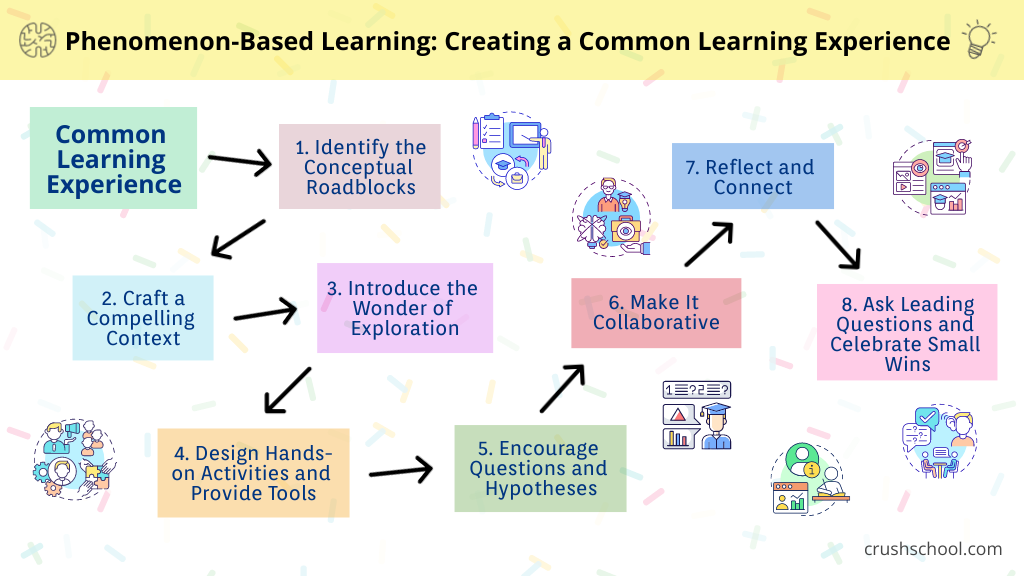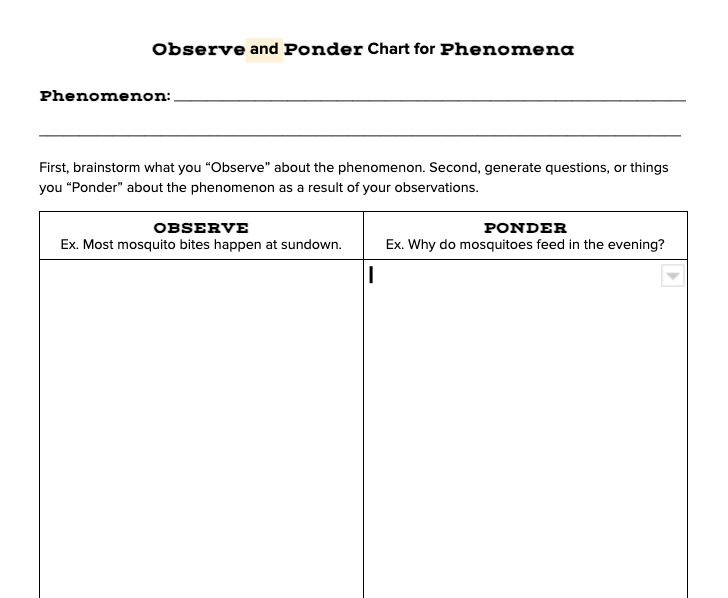Unlocking the Unexplored: Creating a Common Learning Experience for Understanding Difficult Concepts
By using a real-world phenomenon at the beginning of a lesson, or a unit, or a series of lessons, teachers push students to undertake a journey of discovery - a journey that leads to students discovering on their own why and how this phenomenon happens. To this end, they are encouraged to collaborate as they seek and find answers to the questions they themselves generate when observing and analyzing the phenomenon.
But what should we do if the phenomenon itself is too hard for students to connect to or is too complex for students to break down?
When we encounter complex topics that may leave students overwhelmed and disengaged we can employ the power of exploration to spark curiosity, understanding, and confidence that they can indeed tackle the hardest of topics. A common learning experience can be such a tool to help your students unlock the secrets of challenging concepts.
Creating a Common Learning Experience for a Phenomenon
Identify the Conceptual Roadblocks
Before diving into a phenomenon that represents a difficult concept, it's crucial to understand the specific challenges your students may be facing with the concept. Identify the misconceptions or gaps in their understanding, and use this insight to tailor your common learning experience accordingly.
Craft a Compelling Context
Set the stage for the common learning experience by grounding the difficult concept in a real-life context that resonates with your students' interests and experiences. Whether it's a practical application, a thought-provoking problem, or a fascinating scenario, a relatable context fuels curiosity and motivation to dive deeper. At the end, students will be able to relate to the phenomenon you present to them.
Introduce the Wonder of Exploration
Share stories of famous scientists, inventors, or explorers who faced challenges and persevered through exploration. Check out this article that includes the failure and success stories of Albert Einstein, Henry Ford, and the Wright brothers for ideas. Encourage your students to view the difficult concept as an uncharted territory waiting to be explored, rather than an insurmountable obstacle and emphasize the thrill we all feel when our efforts pay off.
Design Hands-on Activities and Give them the tools
Hands-on investigations help unlock comprehension. Create interactive activities, experiments, or simulations that allow students to manipulate variables, observe outcomes, and draw their own conclusions. Give them the tools such as lab materials and encourage them to use online and other resources to investigate the concept actively.
Check out this gas properties investigation I use to help chemistry students gain some background and understanding of gas properties.
Encourage Questions and Hypotheses
As they investigate, encouraging students to ask questions and formulate hypotheses about the difficult concept. Emphasize that it's okay not to have all the answers and to make mistakes, as exploration is a process of discovering of what we do not yet know.
Make it Collaborative
Learning is enriched through collaboration. When students work together, they support each other, share insights, make mistakes together, and collectively overcome obstacles. Encourage sharing of perspectives, discourse, peer teaching, and team problem-solving.
Reflect and Connect
Throughout the common learning experience, prompt students to reflect on their discoveries and connect them to real-world applications. Encourage them to draw parallels between the ideas they are discovering about the difficult concept and their everyday lives.
See them and Celebrate Small Wins
Be in the space with your students as they work through the problem. Acknowledge and celebrate the small wins you notice when they investigate. Positive reinforcement motivates students to persist, boosts their self-confidence in overcoming challenging concepts, and scores you major building relationships points.
As a bonus, being in the space gives you the opportunity to help students by asking questions that lead them to the correct conclusions without giving the answers away.
Make it relevant first
Using a common learning experience tailored to the needs and interests of your students, even the most difficult concepts can become fun. By activating curiosity, using active learning, and promoting collaboration, the learning process can be transformed into captivating explorations into difficult ideas. The ensuing improved understanding of the concepts this challenging idea includes empowers students to persevere and gain confidence in their ability to conquer future challenges that will present themselves inside and out of the classroom.
So let’s make it relevant first by letting them unlock the unexplored for themselves.
Was this article relevant to you? If so, sign up for my Teaching Tips, Resources, & Ideas Newsletter to get the next one as soon as it drops. It’s totally free.
BOOKS & TOOLS
- December 2025 1
- September 2025 2
- August 2025 5
- July 2025 4
- June 2025 2
- August 2024 2
- July 2024 2
- June 2024 1
- October 2023 1
- September 2023 3
- August 2023 6
- July 2023 6
- July 2022 2
- June 2022 1
- November 2020 3
- October 2020 3
- April 2020 1
- March 2020 5
- July 2019 1
- June 2019 1
- April 2019 1
- January 2019 1
- November 2018 3
- October 2018 2
- September 2018 1
- August 2018 8
- July 2018 11
- June 2018 4
- May 2018 5
- April 2018 2
- March 2018 4
- February 2018 5
- January 2018 3
- December 2017 1
- November 2017 5
- October 2017 7
- September 2017 6
- August 2017 5
- July 2017 3
- June 2017 10
- May 2017 7
- April 2017 7
- March 2017 15
- February 2017 12
- January 2017 13
- December 2016 15
- November 2016 8
- October 2016 7
- September 2016 12
- August 2016 14
- July 2016 10
- June 2016 13
- May 2016 10
- April 2016 8
- March 2016 5
- February 2016 7
- January 2016 6
- December 2015 5
- November 2015 8
- October 2015 2

















